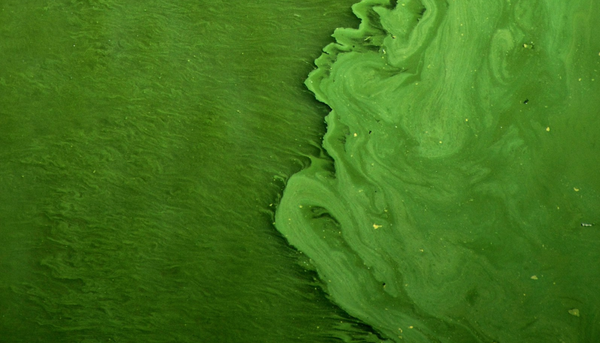You've packed your sunscreen, filled your water bottle, and are ready for a hike. But you'd better not forget about those biting bugs - mosquitos, horseflies and ticks!
While you won’t see them in viral TikToks, these relentless pests can ruin an otherwise perfect outdoor excursion. So - don’t make the mistake of leaving the house or cabin unprotected, especially in Canada where the bugs can be intense and carry dangerous diseases.

The most effective solutions for mosquitoes and ticks are sprays containing DEET or Picaridin.
At first glance, you might think the two compounds are pretty much the same. The truth - not quite. From their chemical origins to field-tested results, there’s a big difference in how - and when - to use each.

DEET: A classic bug repellent with the original formula
DEET stands for N,N-diethyl-m-toluamide. It has been the standard insect repellent for many years since its introduction to the market in 1946.
During World War II, the U.S. Army faced many challenges from insect-borne diseases affecting their soldiers. They developed DEET to protect their troops, and became available for civilian use in 1957.
Pros
- It effectively repels mosquitoes, ticks, and horseflies.
- It offers long-lasting protection of six hours or more.
- It is supported by decades of scientific research.
- It has been tested on children 6 months and older.
Cons
- It has a distinctive chemical odor that some people find unpleasant.
- It feels greasy on the skin.
- Some individuals can be sensitive to the formula and experience irritation.
- It is a strong solvent that can damage plastics and synthetic fabrics.
Effectiveness
- Mosquitoes: DEET is highly effective against mosquitoes. It offers protection for up to 6 hours at a concentration of 25-30%.
- Ticks: DEET is also very effective against ticks. However, a higher concentration and thorough application to exposed areas are necessary for optimal protection.
- Horseflies: These are harder to repel, though some studies show DEET does provide some protection. You can reduce bites, but not entirely prevent them.

Picaridin: The “new” kid on the block
The newer contender in the world of bug repellents is Picaridin, also known as Icaridin. In reality, it's not very new, as it was developed by Bayer in the 1980s using compounds originally found in the black pepper plant.
After development, it gained popularity in Europe and Australia in the 1990s. However, it was only approved for use in Canada in 2012. It offers many improvements over DEET, but it has not been as extensively tested and lacks some of the long-term safety data DEET's long history offers.
Pros
- It effectively repels mosquitoes, ticks, and horseflies.
- Formulations with a higher concentration offer up to 12 hours of protection.
- It feels odorless, non-greasy on the skin, and dries quickly.
- It is safe to use on synthetic fabrics and plastics.
- It is better tolerated by people with sensitive skin.
Cons
- It is not as widely available as DEET-based products and can be harder to find.
- It is sold under different names depending on the brand.
- Some brands use Picaridin as a “secret” ingredient, adding to consumer confusion.
- Heavy sweating may decrease its effectiveness and require more frequent reapplications.
Effectiveness
- Mosquitoes: Some studies indicate Picaridin may be slightly more effective against mosquitoes than DEET.
- Ticks: It's highly effective against ticks, including black-legged or deer ticks and dog ticks. However, thorough application is necessary for effectiveness.
- Horseflies: Picaridin shows relatively higher effectiveness against horseflies. It reduces bites when freshly applied, though some flies may still land.
Which one is best?
Deciding between DEET and Picaridin depends on several factors, not just which one works best. They are both similarly effective against mosquitoes, ticks, and horseflies. The slight advantage of Picaridin against mosquitoes and horseflies is reflected in statistics but unlikely to be felt in real-world use.

So, your choice might depend on personal preferences, your activity level, how much you typically sweat, and other considerations.
Effectiveness
DEET is available in Canada in concentrations up to 30%. Picaridin is available at a concentration of 20%. Both concentrations are similarly effective at repelling mosquitoes and ticks. When it comes to horseflies, neither product is completely effective. However, some limited evidence suggests Picaridin might have a slight edge against these larger biters.
Winner: Tie - slight edge to Picaridin for horseflies.
Duration of protection
DEET in Canada is permitted at concentrations that provide about 6 hours of protection or slightly more. Picaridin at 20% offers up to 12 hours of protection. However this largely depends on your activity level, since Picaridin can wear off if you sweat excessively, which is less of an issue with DEET.
Winner: Picaridin - though depends on activity level.
Skin feel and scent
This is one of the main reasons why people prefer Picaridin. The greasy residue and strong chemical smell DEET has can be uncomfortable if you’re wearing it casually. The feel Picaridin offers is unmatched, making it the clear winner in this category.
Winner: Picaridin.
Gear safety
The fact that DEET can be aggressive to plastics and synthetic fabrics is a significant drawback - it can actually damage your sunglasses, boots, and expensive hiking gear. If you choose to use DEET, make sure to only use it around cotton or other materials which are not affected by the chemical. Otherwise, Picaridin is your best option.
Winner: Picaridin.
Availability in Canada
If you aren’t willing to spend extra time reading ingredients and finding the right product, you’re probably going to end up with a product containing DEET instead of Picaridin. Picaridin was approved in 2012, while DEET has been available for decades. Picaridin’s presence on store shelves is still growing, and it may not be available in all areas yet.
Winner: DEET.
Other Repellent Options and Recommendations
- Use another repellent called Permethrin to treat your clothing and boost the effectiveness of either DEET or Picaridin.
- Avoid coarse weaves and choose tightly woven fabrics, which are less likely to attract ticks.
- Tuck your pants into your socks and wear long sleeves treated with permethrin when heading outdoors.
- You can also consider plant-based alternatives, such as oil of lemon eucalyptus. However, keep in mind it is less effective against ticks compared to DEET or Picaridin.

DEET vs. Picaridin: a final overview
Both DEET and Picaridin provide strong and reliable protection against mosquitoes and ticks. Horseflies are harder to control, and Picaridin may offer better protection. However, DEET is more effective for outdoor activities that cause sweating.
Picaridin offers a more modern, skin-friendly option. It has a more pleasant scent and doesn’t leave an oily feeling on your skin. It’s also the best choice if you’re wearing synthetic materials.
In the debate between DEET and Picaridin, there’s no one-size-fits-all answer. The best bug repellent depends on where you’re going, your activity level, how long you’ll be outside, the insects you’ll face, and personal preferences.






Join the Conversation